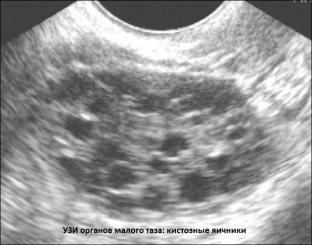Hysterectomy is a surgical operation to remove the uterus from the pelvic cavity due to pathological changes in its tissues. Hysterectomy is often performed in older women, since oncological diseases, which are the main indication for hysterectomy, are more common in women of this age group. Removal of the uterus entails changes in the hormonal background of the body, as a result of which, quite often, women develop posthysterectomy syndrome. This condition affects the work of the whole body of a woman and requires timely diagnostic and therapeutic measures that will help the woman quickly return to her usual way of life.
Methods of diagnosis and treatment of posthysterectomy syndrome
The main trigger in the development of post-hysterectomy syndrome is hypoestrogenia that occurs after removal of the uterus. Estrogen deficiency affects the activity of the nervous system of the body and causes the development of characteristic psycho-emotional and vegeto-neurotic disorders. All women who have undergone hysterectomy have a significantly increased risk of developing extragenital pathology, since the hormonal system affects the work of all other organs and systems. The diagnostic process of posthysterectomy syndrome is based on the study of the hormonal panel, after which an effective therapy regimen is selected.
Post-hysterectomy syndrome:
- What are the risks for women who have had a hysterectomy?
- basic methods for diagnosing posthysterectomy syndrome;
- Effective treatments for post-hysterectomy syndrome.
What are the risks for women who have had a hysterectomy
In addition to the characteristic clinical manifestations of the post-hysterectomy syndrome, such as disturbances in the psychological state of the patient and some of her autonomic functions, hysterectomy increases the likelihood of the following pathological conditions:
- with persistent post-hysterectomy syndrome or accelerated menopause, metabolic and endocrine disorders may occur in a woman's body: the level of total cholesterol and low-density lipoproteins increases by more than 10%;
- the frequency of development of pathology of the cardiovascular system in women who have undergone hysterectomy increases several times compared to women who have not been operated on this occasion;
- Urogenital disorders such as colpitis, dysuria, dyspareunia and prolapse often occur after hysterectomy;
- Osteoporosis is diagnosed 30% more often in patients not taking hormone replacement therapy after hysterectomy than in non-operated women.
Basic methods for diagnosing posthysterectomy syndrome
The diagnostic process of post-hysterectomy syndrome is based on a laboratory study of the hormonal background of a woman, as well as on an ultrasound examination of the pelvic organs. With posthysterectomy syndrome, the level of estradiol in the blood of women decreases to values characteristic of the postmenopausal period. Characteristic is also an increase in the levels of follicle-stimulating and luteinizing hormones, which reflect the persistent extinction of ovarian function. Ultrasound examination demonstrates characteristic changes in the ovaries after hysterectomy. In the early postoperative period, the volume of the ovaries increases by almost one and a half times as a result of their cystic transformation, Dopplerography indicates a decrease in blood flow and the occurrence of venous congestion in the small pelvis.







Add a comment